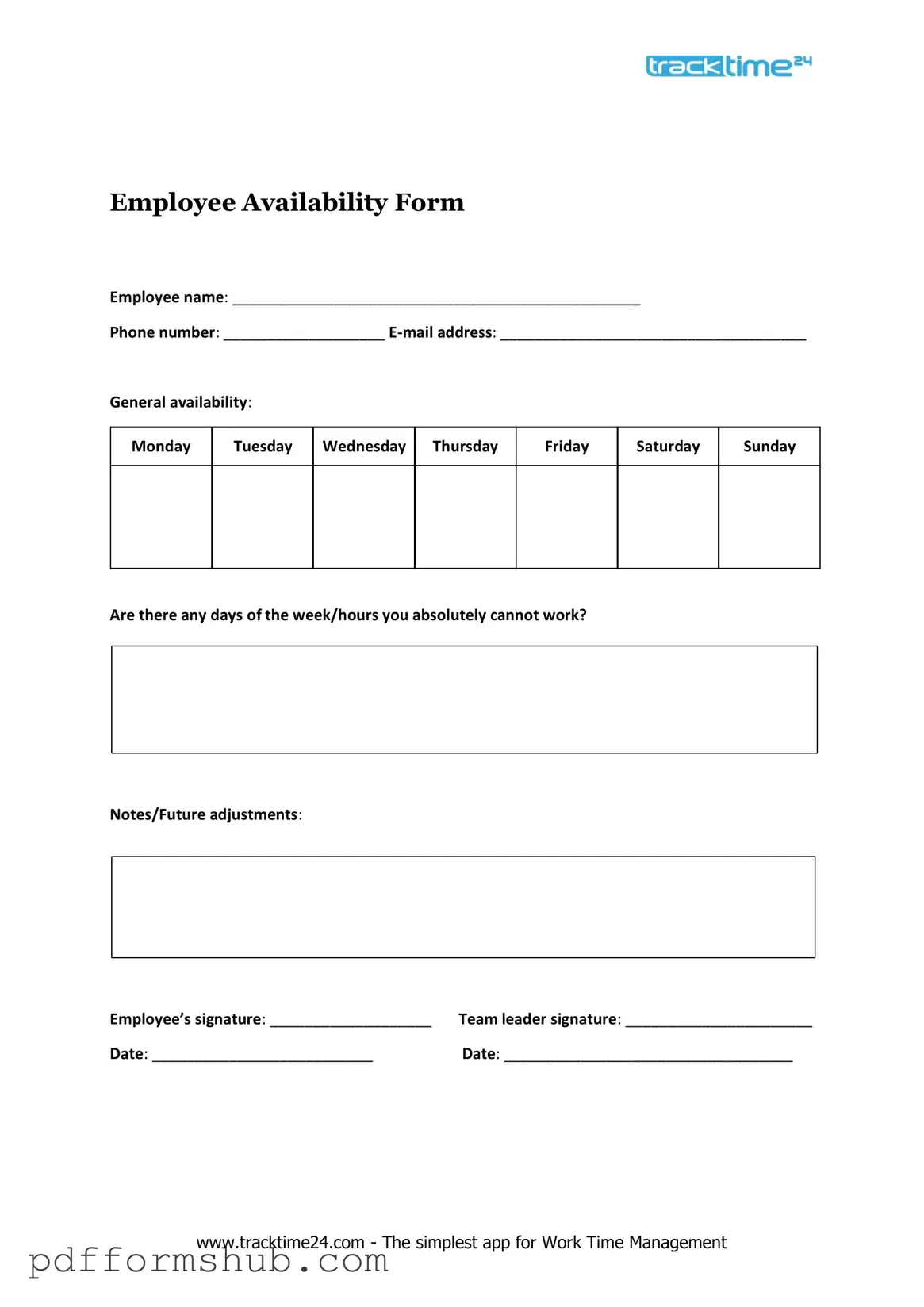The Employee Availability form serves as a crucial tool for both employers and employees in managing work schedules effectively. This form allows employees to communicate their preferred working hours, days off, and any scheduling constraints they may have. By detailing availability, employees can ensure that their personal commitments are respected while also meeting the operational needs of the business. Employers benefit from this information by being able to create schedules that maximize productivity and minimize conflicts. Additionally, the form often includes sections for employees to indicate their preferred shifts, overtime availability, and any upcoming time-off requests. Accurate completion of this form is essential for fostering a transparent and collaborative work environment, ultimately leading to improved job satisfaction and efficiency in scheduling practices.
